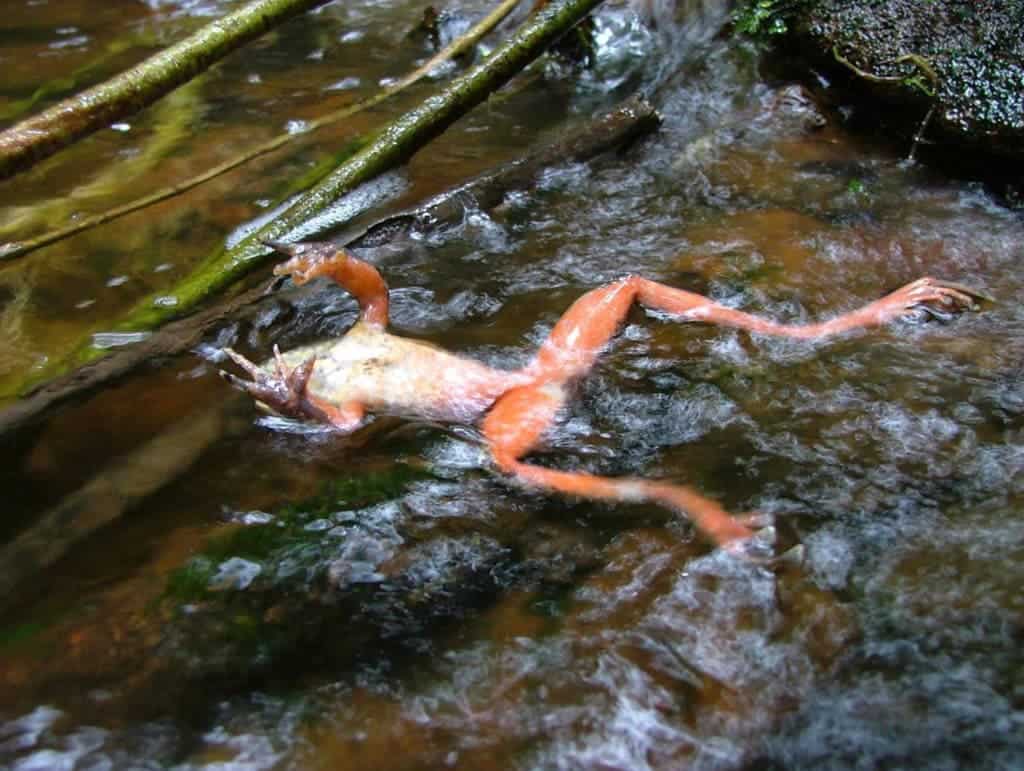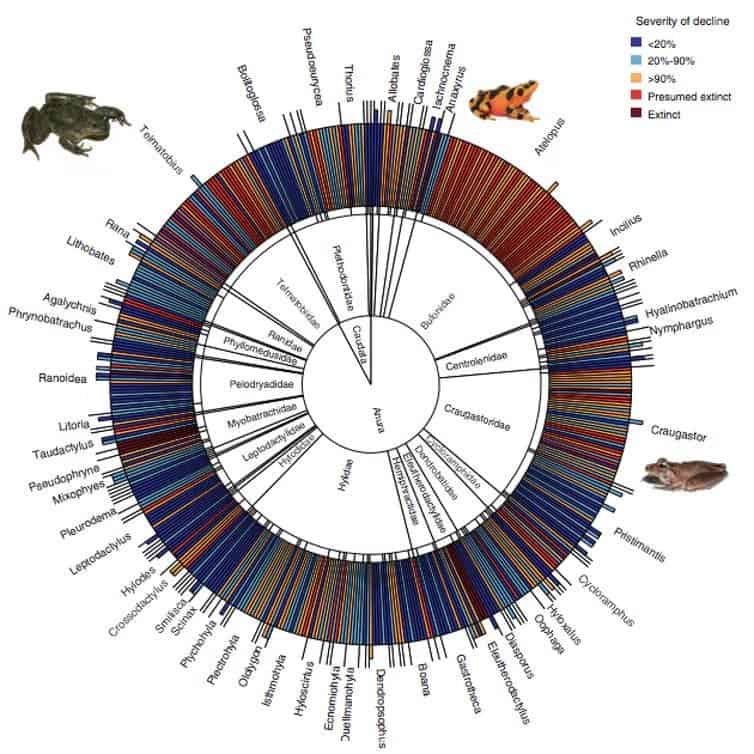
A fungus that gruesomely kills frogs and other amphibians is responsible for the biggest decline in wildlife in recorded history. In the past 50 years since the first outbreaks were signaled by biologists, the disease, known as chytridiomycosis, has caused the extinction of 90 species and wiped out 90% of the populations of another 124 species.
Chytridiomycosis is caused by a fungus called Batrachochytrium dendrobatidis — or Bd for short. The fungus is believed to have originated in Asia where it was confined to certain hotspots. However, it started to spread across the world in the early 20th century, during a period when international trade was booming. Along with spices, porcelain, and various other goods, Western sailors also carried Bd from port to port via infected stowaway animals. Today, Bd is present in over 60 countries across five continents.
Biologists first noticed in the ’70s and ’80s that amphibian populations began to suddenly decline or outright disappear. It wasn’t until 1998 that this decline was associated with Bd and the scope of the crisis became apparent. But a recent analysis suggests that the situation is even worse than some have feared. According to new data compiled by researchers at the Australian National University, the fungus is responsible for the decline of 501 species of frogs and other amphibians — that’s 6.5% of all known amphibians. Australia, Central America, and South America are particularly hard hit, say the authors.
“Highly virulent wildlife disease, including chytridiomycosis, is contributing to the Earth’s sixth mass extinction,” said Dr. Ben Scheele of The Australian National University in Canberra, the lead author of the new study.
“We’ve lost some really amazing species.”

The fungus is really after nutrients found on the amphibians’ skin. However, it also feasts on the tissue of the animals, eating away their skin and triggering fatal heart attacks. The disease spreads through the water and can persist outside the host which makes traditional tactics for fighting invasive species useless. This isn’t some feral cat or rodent, but a microorganism that virtually permeates the entire environment once it gets a footing.
“It’s a staggering thing to consider,” said one of the study’s authors, Jonathan Kolby, in an interview with the Washington Post. “We’ve never before had a single disease that had the power to make multiple species extinct, on multiple continents, all at the same time.”
There is a glimmer of hope, though. The findings suggest that 60 species have shown signs of recovery. Perhaps some sturdy individuals have the necessary adaptations to keep the disease at bay. But no one can tell for certain whether amphibians are starting to develop an evolutionary edge against the fungus or it’s just a matter of time before a new outbreak comes to deliver the killing blow.
As if Bd wasn’t enough, amphibian species across the world are threatened by habitat loss, exploitation, and climate change — these are still the main threats for thousands of species. The best thing we can do right now is to shelter currently untouched population from Bd by restricting access to sanctuaries. Some research groups are breeding individuals from contaminated habitats in captivity in hopes of averting a species’ total annihilation.
“It’s really hard to remove chytrid fungus from an ecosystem — if it is in an ecosystem, it’s pretty much there to stay unfortunately. This is partly because some species aren’t killed by the disease,” Scheele said.
“On the one hand, it’s lucky that some species are resistant to chytrid fungus; but on the other hand, it means that these species carry the fungus and act as a reservoir for it so there’s a constant source of the fungus in the environment.
But, the truth is that there is not one thing we can do to significantly improve the odds of survival of infected habitats or, for that matter, stave off the spread of Bd. And this makes this killer fungus incredibly scary.






